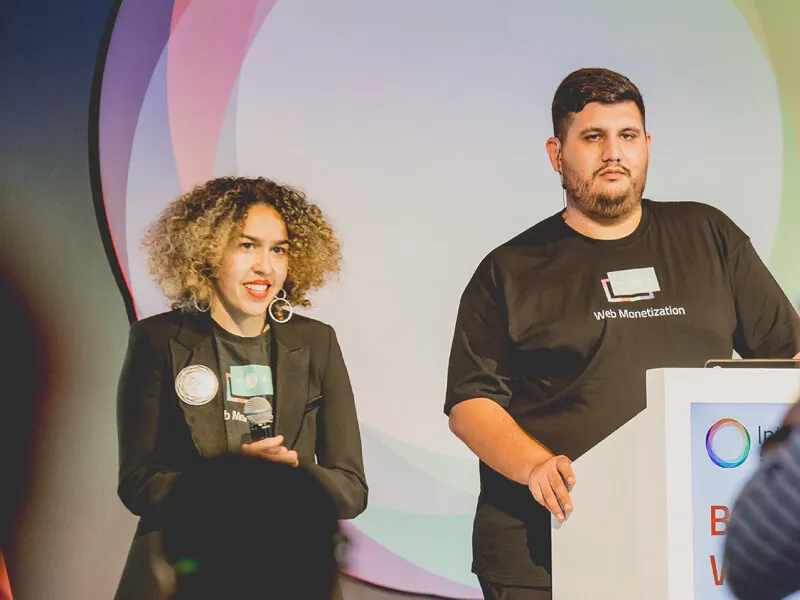
Paying the web forward with Web Monetization: Allowing users to consume content one byte at a time
Just as the launch of the internet disrupted the traditional business models of most global sectors, 42 years later content owners and publishers are once again facing the daunting challenge of how to effectively monetize their work. In the face of evolving user behaviors and technological advancements, Web Monetization offers an exciting way for content owners and publishers to expand their payment options, offering consumers new ways to pay.
The rise of ad blockers and subscription fatigue
One of the primary obstacles facing content creators is the widespread adoption of ad blockers. A third of today's global internet users deploy ad blockers to avoid the intrusive and often disruptive nature of online advertisements. This trend has had a significant impact on the ad-based revenue model that many content creators have relied on, forcing them to seek alternative solutions.
Compounding this challenge is the growing phenomenon of ‘subscription fatigue’. Harvard Business School reports that 75% of companies that sell directly to customers have a subscription model and expect subscription billing to grow by between 50 to 100% in the next five years.
However, as the number of subscription-based services continues to proliferate across various industries, users are becoming increasingly selective and less willing to commit to yet another recurring payment. Even for major news outlets with paywalls, users often find it frustrating to have to pay a full subscription fee just to access a single article or piece of content.
Introducing Web Monetization – A new approach
It is within this context that Web Monetization has emerged as a promising solution, aiming to address the shortcomings of traditional monetization methods while empowering both content creators and users.
At its core, Web Monetization is a system that allows any website or web page to receive payments directly from visitors who have Web Monetization enabled. The Interledger Foundation describes it as: “an open, native, efficient, and automatic way to compensate creators, pay for content, and support crucial web infrastructure.”
The process is relatively straightforward. Software developer, Radu Popa, explains that content creators just need to add a simple HTML link element to their website, making it Web Monetization ready. On the user side, individuals install a Web Monetization extension in their browser, which connects to a digital wallet of their choice.
When a Web Monetization-enabled user visits a web monetized site, the extension automatically begins streaming small, continuous payments to the content creator in the background, without any additional user action required.
This model offers several key benefits:
- Flexible payment options: Users have the ability to set their own budget and hourly rate for Web Monetization, giving them control over how much they want to spend. They can also choose to send one-time ‘tips’ or support payments to content creators they particularly enjoy, providing a more granular and voluntary form of support.
- Diversified revenue streams: For content creators, Web Monetization offers an additional revenue stream that can complement their existing advertising or subscription-based models.
- Empowering user engagement: By allowing users to voluntarily support the content they value, Web Monetization fosters a more positive and engaged relationship between creators and their audience. Users no longer feel forced into a subscription but can choose to contribute in a way that aligns with their preferences and consumption habits.
"Web Monetization allows content owners and publishers the freedom to still keep their ads, but also include this new revenue stream. This revenue diversification answers the needs of both the creators and the users who can now safely and easily acknowledge the good work being done by creators. It’s allowing users to enjoy bite-sized bits of content without the burden of large subscriptions for content they may never choose to consume,” explains Senior Product Manager, Rabeb Othmani.
The future of Web Monetization
Web Monetization is rapidly evolving. One key area of focus is the addition of more flexible payment models. The team is exploring new monetization models that could, for example, split payments across the different websites a user visits over a given period, rather than continuous payments.
Another area of development is the creation of Web Monetization tools and marketing resources for content creators such as customisable banners, widgets, and other user-friendly features that make it easy for creators to integrate Web Monetization and encourage their audience to support them.
Expanding the ecosystem of supported digital wallets is also a priority, as the team aims to integrate with more mainstream wallet providers to give users an even broader range of options. This aligns with the overarching goal of fostering an open and interconnected Web Monetization landscape, where users have the freedom to choose their preferred payment methods and content creators can access a diverse pool of potential supporters.
New business model, a multitude of opportunities
As the digital landscape continues to transform, the use cases for innovative and user-centric monetization solutions will quickly gain traction. Web Monetization, with its focus on empowering creators of all kinds, engaging users, and fostering an open and interoperable ecosystem, presents a compelling alternative to the challenges posed by traditional advertising and subscription-based models.
By leveraging the power of Open Payments and embracing a community-driven approach, Web Monetization aims to redefine the way online content is valued and supported, ultimately benefiting both content owners and their audiences. As the landscape continues to evolve and expand its capabilities, the potential for Web Monetization to reshape the future of digital content monetization is immeasurable.
Watch the 2024 Summit talk on Web Monetization here.